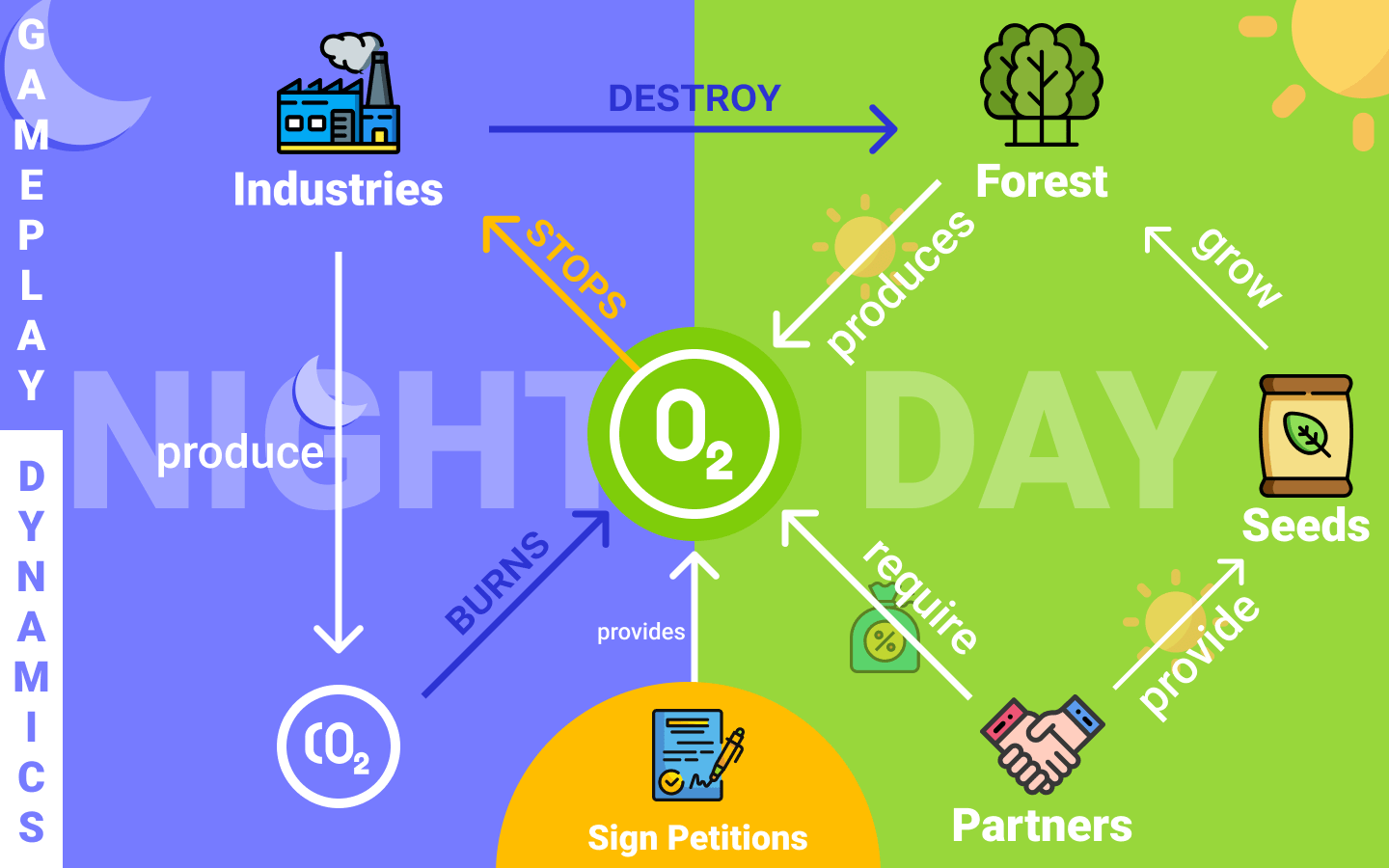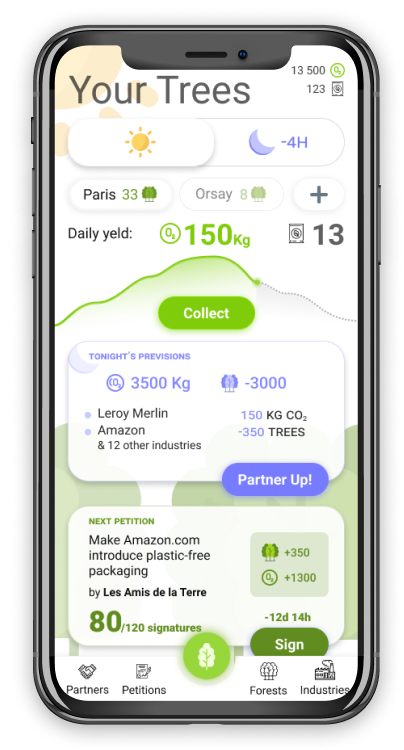“Design a serious game for communicating and teaching users about the seriousness of deforestation, bring multiple users to solve issues as a group, and taking actions in real-life scenarios.”
Introduction
Deforestation is part of a larger problem that is widely discussed, which is climate change. Through our research, we noticed that there are gaps in the way existing serious games deal with climate change.
During this project, we wanted to answer the following research questions:
- What is the current state of the art regarding raising environmental awareness through serious games?
- What is the effectiveness of serious games in triggering a concrete change in social behavior?
- What are the social forces that drive the creation of serious games that tackle climate change?
The team
Giona Fossati
Research, Ideation & Wireframing
The Game
Gameplay Dynamics
Join your local forest
Plant trees to earn daily oxygen
Every user can join forests around the world and contribute to planting trees. The users then increase their oxygen yield based on the numbers of trees.
Day&Night Alternance
Overnight events threaten your forest
The game runs on a day-night cycle: this allows us to add an element of routine and increase the perceived simplicity of the game. [3] During the day the users must prepare for the night when disparate events from the industries will happen. The only way to fight them will be through Oxygen transactions.
Join forces to fight industries
Partners in the fight are essential
To grow the number of the trees, hence the daily oxygen yield, the players are required to join local or global “Partners”. These actors in the game are real environment protection associations. By this means, the user will get to know his local association and will be nudged to get to know them better.
Double Currency
Seeds and Oxygen are the game's currencies
The user will be obliged to join the Partners by a subscription (paid in oxygen). With the membership each association will provide the user with a daily supply of seeds to increase his yield and be able to better protect the forest from night events.
How we planned to achieve the desired outcome?
Literature Review
When thinking about inspiring change using serious games we can think about persuasive design. There is a focus in HCI to create persuasive technology that only works at an individual level, but this is limiting from a societal and political point of view.
Insight 1:
The "Frame Bridging" Concept:
The effectiveness of change appears when people are connected through their actions rather than to their actions. [1]
Insight 2:
Lack of Action:
Existing serious games concentrate on increasing awareness of issues, but lack of helping and inspiring users to take action. [2]
Insight 3:
Fogg's Behaviour Model to Persuasive Design:
We applied Fogg’s behavior model to create a balance between user motivation and the ability to achieve the desired behaviors. [3]
Game's Goals
The game we design has three main purposes in mind:
- Teach users about the reality of deforestation
- Unite users through their actions
- Take a stand with real-life actions.
Fogg's Behaviour Model
This model is based on three dimensions: motivation, ability, and trigger. If the user has enough motivation, the ability to use the game, and a conveniently timed trigger, the user’s behavior is the one sought by the designers (see Figure 1). We designed the game dynamics by following and applying the core principles of this model.
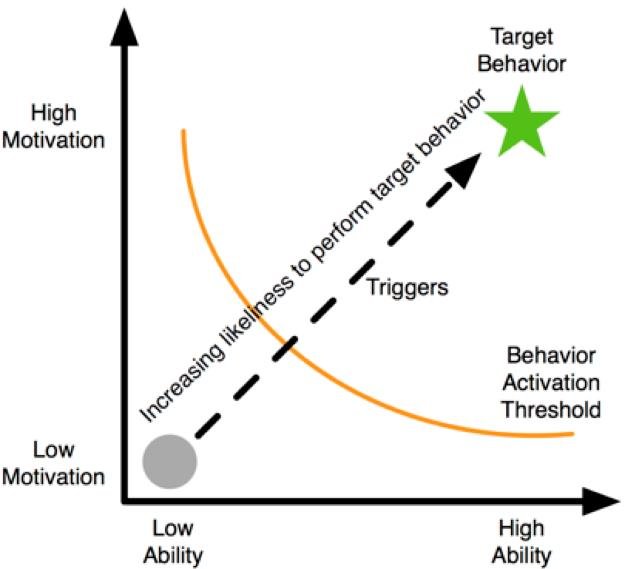
Figure 1 - Fogg's behavior model
Design Process
To complement the Fogg behavior model, we also looked into Fogg’s eight-step process to create a persuasive design game. (Figure 2) [4]
1. Choosing a simple behaviour as the target
The first principle that Fogg defines in his paper is: "aim to simple behaviors that could later and with future developments be widened to more complex and sophisticated behavioral changes."
Hence, we came to the conclusion that the behavior that could resemble and lead to a more active political participation from our players was the petition signing.
Signing a petition mirrors the power of people to change things in real life. Is a small step towards the change that everybody can take and by using the application, the users will learn more about why they should sign these petitions and what they are about.

Figure 2 - Fogg's design process
2. Choose a receptive audience
The receptive audience we selected is the generations that have the highest learning potential and ability to change future generations. These are part of the Generations Y and Z and they are familiar with the technology channel we selected as well.
3. Find what prevents the target behaviour
The target audience can be prevented to reach the target behavior by their lack of motivation: it could be happening because of the initial low interest and information they have about deforestation and climate change. This can cause a neutral reaction towards the game and result in low motivation to even try the game: persuasive design helped us define game dynamics that could higher their motivation to engage in the game.
4. Select a familiar technology channel
We wanted to focus specifically on mobile technology. The game comes as a mobile application and in this way, our target audience can access the game anytime during the day.
5. Find other relevant examples
The examples we found show avenues in both the gameplay and serious game areas. (Figure 3)
Figure 3 - Relevant examples of games related to our idea
Ingress Prime & Pokemon GO
• Location-based
• Real-life map interaction
Ayiti: the cost of life
World-building and resources management
Scenario & Wireframe
We created an interactive mockup (Figure 4) to explain how we think the basic functionalities should run.
The User is accessing the dashboard and taps on the Collect button to collect the oxygen and seeds that accumulated during the day.
With the newly gained resources, the User decides to plant more trees to increase the yield of oxygen for the future days. The User sees that there are only 4 hours left until the night comes. The User clicks on the "Partner up" button to check the provisions for the night.
The User sees all the events happening during the night, and because the first one’s goal is already completed, he clicks on the event that still needs provisions (Amazon will cut down trees) and contributes with oxygen to stop the event from happening. The User contributes 1700 oxygen to the cause using the slider and completes the event.
Figure 4 - Designed mockup interactions
Takeaways
Future work will involve testing different aspects: we would test trough interviews if we identified correctly the motivations that prevent the target behavior. Testing the effectiveness of the triggers: as they are an important building block of the persuasive design defined by Fogg, it is important to make sure that they work well and are coordinated with the motivation and ability of the users. Conduct a 1-month experiment then get in touch with a group of users to quantify their knowledge about deforestation after using the game and evaluate how likely they would pursue climate change issues going forward.
Selected Works
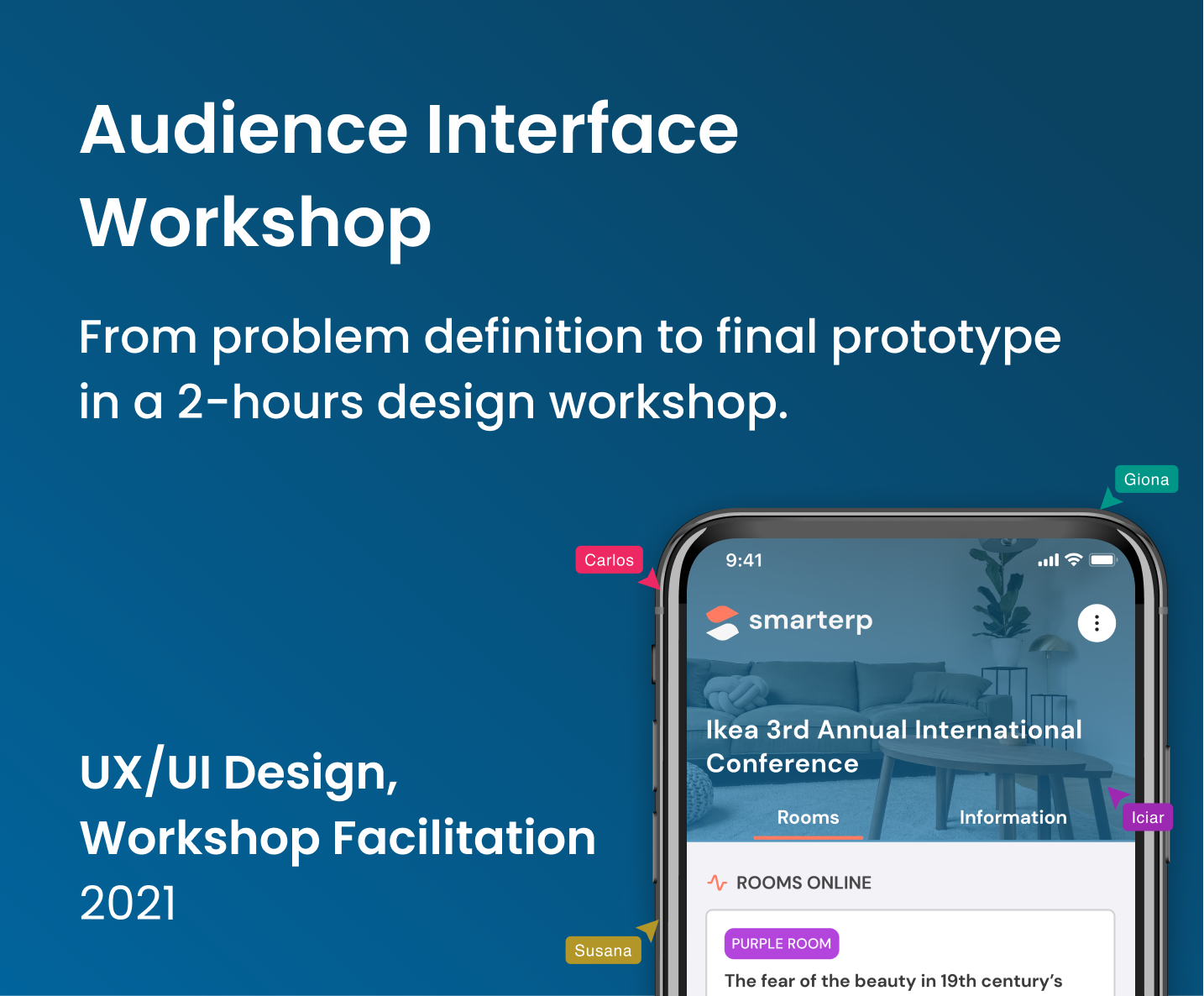
Audience Interface WorkshopUX/UI Design Workshop
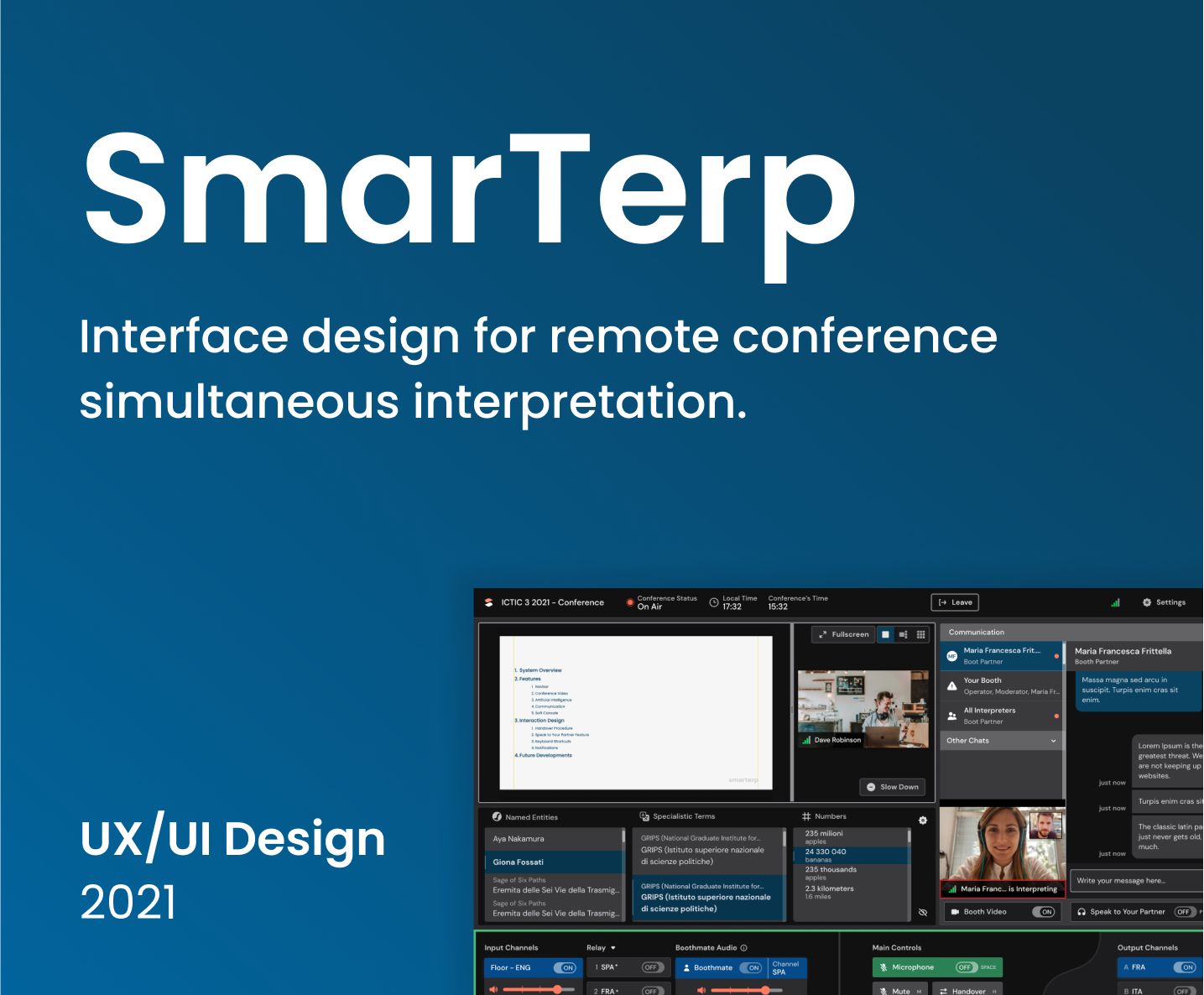
SmarTerp - Simultaneous Interpretation InterfaceProduct Design

CityBikesUX/UI Redesign
fossatigiona@gmail.com
